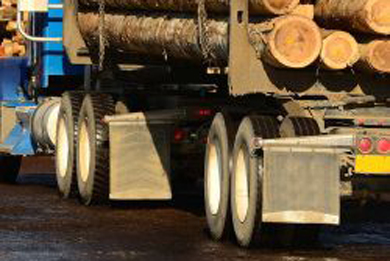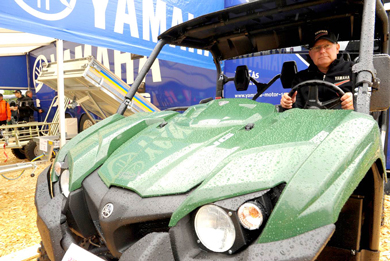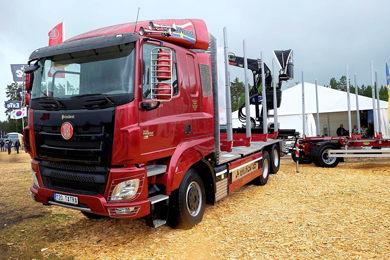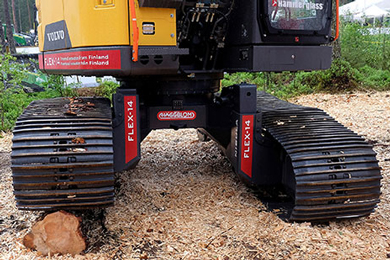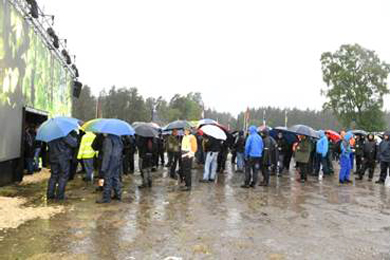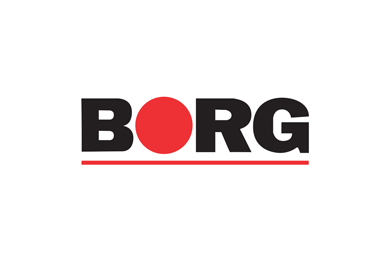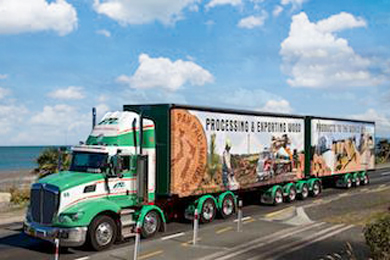Pioneering high-productivity Super-Bs cut truck journeys – Two pioneering high productivity truck and trailer units that are longer and heavier than standard vehicles are dramatically reducing the number of truck journeys on their set route in Hawke’s Bay. And the success of the pair, each comprising a standard tractor unit and two purposebuilt trailers, warrants official approval of more like them, New Zealand Truck & Driver magazine believes.
In five years of operation, the so-called Super-B units have carted one million tonnes of wood pulp between the Pan Pac Forest Products mill at Whirinaki, to the Port of Napier – cutting the number of truck journeys needed for the job by a third.
The units, designed and built by Rotorua’s Kraft Engineering for Emmerson Transport (ETL), operate on High Productivity Motor Vehicle (HPMV) permits, which allow their 23.8 metre length and an additional 18-tonnes of weight above the 44-tonne standard weight limit.
They are strictly limited to the 18-kilometre route between the mill at the port, as approved by their NZ Transport Agency permits.
ETL managing director Ian Emmerson told NZ Truck & Driver that with the Super-Bs “we’ve taken 3500 movements off the road per 12-month period. They’re doing 28-30 total round trips a day, from 6am to 10pm, over two shifts.”
As well as cutting the daily trips and total kilometres travelled by 33% (compared to the six standard truck and trailer units they replaced), the Super-Bs have also cut labour input by 27%, capital input by 12% and fuel use (and thus harmful exhaust emissions) by 9%, according to the magazine.
Pan Pac’s pulp division general manager Tony Clifford said that the Super-Bs have saved “over one-million litres of diesel for every year in operation. The HPMV concept has halved our product cartage cost over the next equivalent option.”
The two units were put to work by ETL in 2012. Another Kraft-built Super-B, a logging unit, was also approved around the same time, to work in the central North Island. They were sanctioned by the NZTA as part of its highly-successful HPMV programme – aimed at improving the efficiency and productivity of NZ’s national truck fleet.
Thousands of trucks have now been approved to operate at higher weights, subject to strict conditions, under the programme.
The vast majority of them though are shorter and lighter than the Super-Bs and NZ Truck & Driver publisher Trevor Woolston is concerned that the opportunity for even more productivity gains is being lost, with the NZTA appearing to “stall” the project…despite their proven success and an industry keen to adopt the concept in other regions.
The magazine says that Kraft Engineering spent four years developing and gaining approval for the Super-B concept…which has now proven successful in five years of operation. But Kraft told NZ Truck & Driver that its applications for further Super-Bs have so far been rejected by the NZTA.
Woolston says that while the Super-Bs are not suited to general use across the country, “they could, if permitted, bring the same benefits to all road-users (and the NZ economy) in many other areas.
“Provided the roads are suitable for these units, the Super-Bs are perfect for freight tasks where trucks run back and forth on the same route, all day, every day.
“The public and the industry alike both want to see fewer trucks on the road – and allowing them to carry more freight is the best way of achieving that.”
Ian Emmerson also believes that the Super-Bs have potential elsewhere, telling NZ Truck & Driver: “There are a lot of areas where this concept would work, and reduce costs, and benefit all operators and the economy. The NZTA is curious, but we’d like them to be a bit more open-minded about it happening, because you need to protect exporters.”
And it’s not just economically positive, he told NZ Truck & Driver: “Socially, that’s an achievement we’re proud of, and which the NZTA and local authorities would be supportive of.”
Pan Pac’s Tony Clifford told NZ Truck & Driver: “We’ve saved over 400,000-litres of diesel since these units were introduced. In regional terms, Pan Pac contributes just over $400million of the Hawke’s Bay GDP, around 5.5%; is responsible for providing 1900 fulltime jobs, and we account for one-third of all the products through the Napier Port.
“The HPMV concept has been a critical part of delivering our product reliably and at the lowest costs, given the existing technology and the compliance regulations at the time.” Road Transport Forum chief executive Ken Shirley says that the HPMV programme has led to “huge” gains and is “a magical story of success.
“The beauty and the promise of HPMV was to recognise that all of the state highways and arterial routes can comfortably take up to 60-tonnes….. Yes, the HPMVs are bigger, but they’re better, safer, newer, fewer, with improved technology – so you’re actually moving more goods with fewer, modern trucks.”
NZTA’s freight strategy manager Marinus La Rooij, told the magazine that he does believe that “in the future there will be more units like this on the road” – tailored for very specific freight tasks, where the roads and the environment can safely accommodate them.
A review of trucks and trailers over 23-metres long is currently under way and should be finalised by the end of the year, he said.
Future Super-Bs, he added, would also likely be limited to precise routes: “There’s not a lot of possibility for widespread general access because the road network is too tight, and we’re not prepared to compromise safety…but what’s happened here has been fantastic.”
http://www.nztruckanddriver.co.nz/


